Persepolis, Treasury
Q64682959Persepolis (Old Persian Pârsa, modern Takht-e Jamshid): Greek name of one of the capitals of the ancient Achaemenid Empire, founded by king Darius the Great (r.522-486 BCE). There were several satellite sites, Naqš-e Rustam and Takht-e Rustam.

The Treasury of Persepolis (map #2) belongs to the oldest building phase of Persepolis, the great design by king Darius I the Great. The other main element was the Apadana, where the great king received tribute from all the nations in the Achaemenid Empire, and gave presents in return.
This exchange of gifts was one of the central elements in the Persian royal ideology, and the Treasury (here seen from the northwest) was, therefore, one of the most important symbols of the great king's power. It is no coincidence that Alexander the Great, in 330, selected the Apadana and the Treasury to be destroyed, together with the Palace of Xerxes.
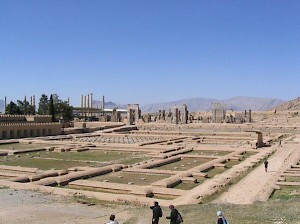
Many people were employed to keep the gold and silver shining: from the Fortification tablets, it is known that in 467 BCE, no less than 1348 people were employed in the Treasury (here seen from the southeast). It was rebuilt several times.
In the Treasury, two almost identical reliefs were found, which once decorated the eastern and northern stairs of the Apadana. It is not known why they were removed.
Several weights were found as well: large, heavy blocks of diorite with an inscription. Below, you can see weights of 120 and 60 karša. The inscriptions, which mention king Darius, are known as DWc. The statue to the left is a marble Penelope, which may have been taken away from Greece during the Persian expedition of 480-479. Of course it can have been a diplomatic gift as well.
Among the other finds are the Persepolis Treasury Tablets.
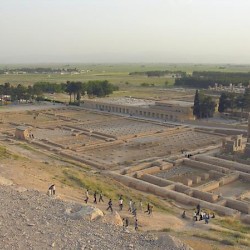 Persepolis, Treasury |
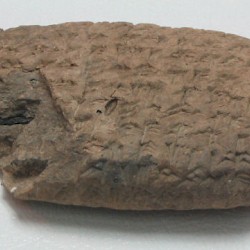 Persepolis, Treasury, One of the Persepolis Treasury Tablets |
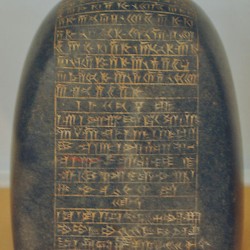 Persepolis, Treasury, Weight DWc |
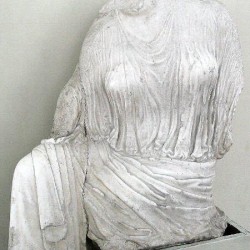 Persepolis, Treasury, Statue of Penelope |